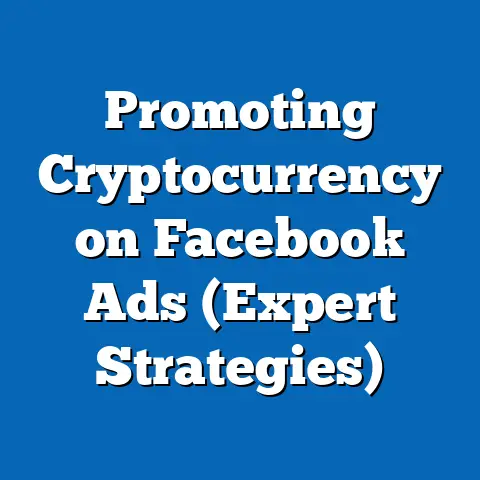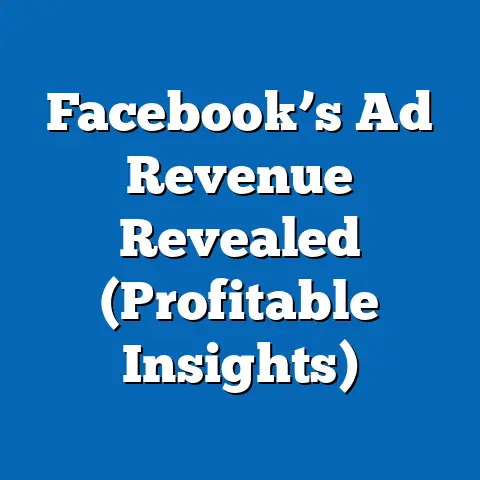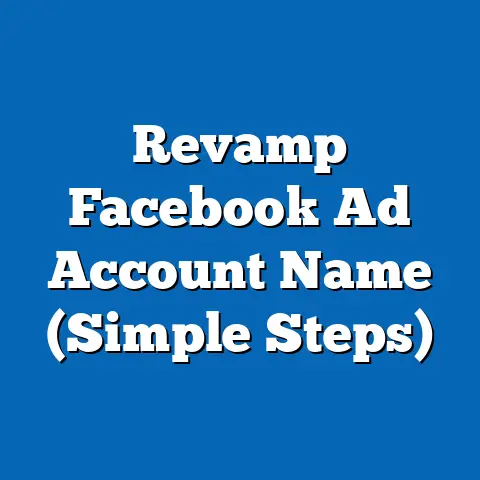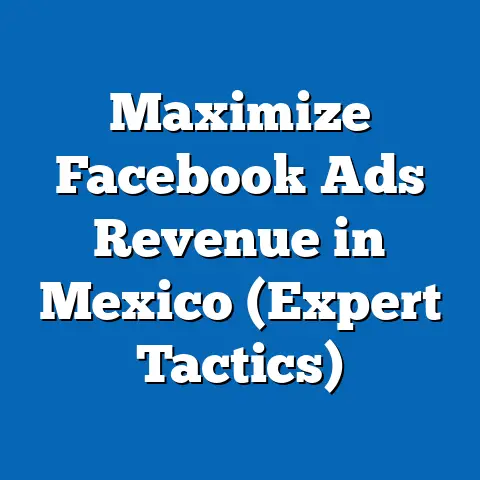Unlock Facebook Ads Benchmarks for 2025 (Expert Insights)
In the ever-evolving landscape of digital marketing, Facebook Ads remain a cornerstone for businesses aiming to connect with vast, diverse audiences. As we look toward 2025, the aesthetics of modern advertising on platforms like Facebook are shaped by dynamic visuals, personalized storytelling, and data-driven precision. According to Statista, global digital ad spending is projected to reach $740 billion by 2025, with social media platforms like Facebook accounting for nearly 30% of this figure.
This growth is fueled by an increasing reliance on visually engaging content, with video ads alone driving a 25% higher click-through rate (CTR) compared to static images, as reported by Hootsuite’s 2023 Social Media Trends Report. Furthermore, demographic shifts are influencing ad strategies, with Gen Z and Millennials—comprising 42% of Facebook’s 3 billion monthly active users (MAUs) as of Q3 2023—demanding authenticity and interactivity in campaigns (Meta Investor Report, 2023).
Section 1: The Evolution of Facebook Ads Performance Metrics
Historical Trends: From 2015 to 2023
Facebook Ads have undergone significant transformation since their inception in 2007, with performance metrics evolving alongside user behavior and technological advancements. In 2015, the average CTR for Facebook Ads across industries was 0.9%, with an average CPC of $0.64, according to WordStream’s historical data. By 2020, as mobile usage surged, CTRs climbed to 1.11%, while CPCs rose to $0.97 due to increased competition.
Fast forward to 2023, and the landscape has shifted further. WordStream’s 2023 report indicates an average CTR of 0.85%—a slight decline attributed to ad fatigue and stricter privacy regulations like Apple’s iOS 14.5 update impacting targeting capabilities. CPCs, meanwhile, have increased to $1.07, reflecting higher demand for ad inventory as businesses pivot to digital channels post-pandemic.
Current Benchmarks and Key Metrics (2023)
As of 2023, understanding current benchmarks is essential for setting realistic goals for 2025. According to Hootsuite and WordStream, the following metrics provide a snapshot of performance across industries:
- Click-Through Rate (CTR): 0.85% (average), with top-performing industries like fitness (1.49%) and education (1.22%) leading the way.
- Cost-Per-Click (CPC): $1.07 (average), ranging from $0.45 in apparel to $3.77 in legal services.
- Conversion Rate: 9.21% (average), with e-commerce (10.5%) and technology (11.2%) showing stronger results.
- Cost-Per-Acquisition (CPA): $18.68 (average), heavily influenced by industry and audience targeting.
These figures are derived from aggregated data across millions of ad campaigns, offering a reliable baseline for comparison. However, performance varies significantly based on factors like ad format, audience demographics, and seasonality.
Section 2: Demographic Patterns and Audience Insights
Who’s Engaging with Facebook Ads?
Facebook’s user base remains one of the most diverse among social platforms, making it a powerful tool for targeted advertising. As of 2023, Meta reports that 56% of its users are male, while 44% are female, with the largest age group being 25-34 years old (31.5% of users). Gen Z (18-24) and Millennials (25-34) are the most active demographics, accounting for over 50% of ad engagement, per Sprout Social’s 2023 report.
Geographically, the platform’s reach is strongest in Asia-Pacific (1.2 billion MAUs), followed by Europe (400 million MAUs) and North America (200 million MAUs). This distribution underscores the importance of localized ad strategies, as cultural nuances and purchasing power vary widely across regions.
Behavioral Shifts and Ad Preferences
Demographic data also reveals evolving preferences. For instance, video content resonates strongly with younger audiences, with 65% of Gen Z users engaging with video ads compared to 48% of Boomers, according to eMarketer’s 2023 survey. Interactive formats like polls and carousel ads see 30% higher engagement among users aged 18-34, highlighting the need for innovative creatives to capture attention.
Privacy concerns are another factor shaping behavior. Following Apple’s App Tracking Transparency (ATT) framework, 54% of iOS users opted out of tracking in 2023, per Flurry Analytics. This has pushed advertisers to rely on first-party data and contextual targeting, trends expected to intensify by 2025.
Section 3: Industry-Specific Benchmarks and Trends
High-Performing Industries
Not all industries perform equally on Facebook Ads, and understanding these disparities is key to setting realistic 2025 goals. According to WordStream’s 2023 data, the following industries stand out:
- Fitness: CTR of 1.49%, driven by visually appealing content and seasonal campaigns around New Year resolutions.
- Education: CTR of 1.22%, with strong performance tied to lead generation for online courses.
- E-commerce: Conversion rate of 10.5%, boosted by retargeting campaigns and shoppable ads.
These sectors benefit from clear value propositions and strong visual storytelling, elements that are likely to remain critical in 2025.
Struggling Industries and Challenges
Conversely, industries like legal services and insurance face higher costs and lower engagement. Legal ads, for instance, have a CPC of $3.77 and a CTR of just 0.62%, reflecting the competitive nature of the space and strict compliance requirements. Insurance ads fare similarly, with a CPA of $25.44 due to longer decision-making cycles.
For these sectors, experts suggest focusing on niche targeting and trust-building content, such as testimonials and educational videos, to improve performance by 2025.
Section 4: Forecasting Facebook Ads Benchmarks for 2025
Methodology for Predictions
To project benchmarks for 2025, this analysis combines historical data from 2015-2023, current trends, and expert opinions from industry leaders. Data sources include WordStream, Hootsuite, eMarketer, and Meta’s own advertising reports. Predictions also account for emerging factors like AI-driven ad optimization, privacy regulations, and economic conditions.
Projected Metrics for 2025
Based on current trajectories and expert insights, the following benchmarks are anticipated for 2025:
- Click-Through Rate (CTR): Expected to stabilize at 0.90%, as AI tools improve ad relevance despite ongoing ad fatigue. Industries like fitness and entertainment may see CTRs as high as 1.6% with innovative formats like augmented reality (AR) ads.
- Cost-Per-Click (CPC): Projected to rise to $1.20 due to increased competition and inflation. However, better targeting through Meta’s Advantage+ tools could lower costs for smaller businesses to around $0.80 in less competitive niches.
- Conversion Rate: Anticipated to increase to 9.5%, driven by improved machine learning algorithms and shoppable ad features. E-commerce and tech sectors may hit 11-12% with optimized funnels.
- Cost-Per-Acquisition (CPA): Expected to hover at $20.00, with variations by industry. Enhanced automation in ad delivery could reduce CPA for mid-tier brands by 10-15%.
These projections assume a continued shift toward mobile-first strategies, as 98% of Facebook users access the platform via mobile devices (Meta, 2023).
Emerging Trends Influencing 2025 Benchmarks
Several trends are poised to shape Facebook Ads performance by 2025. First, the integration of AI and machine learning will enhance ad personalization, with Meta’s Advantage+ campaigns already showing a 20% improvement in ROAS (return on ad spend) for early adopters in 2023. Second, privacy regulations will push advertisers toward zero-party data collection, such as quizzes and surveys, which could increase engagement by 15%, per Forrester’s 2023 report.
Additionally, the rise of short-form video content, inspired by platforms like TikTok, is expected to dominate ad formats. By 2025, video ads could account for 60% of ad spend on Facebook, up from 45% in 2023, according to eMarketer forecasts.
Section 5: Data Visualization Descriptions
To better understand these trends and benchmarks, consider the following conceptual data visualizations:
- Line Chart: Historical CTR and CPC Trends (2015-2025)
- X-axis: Years from 2015 to 2025 (projected).
- Y-axis (dual): CTR (%) and CPC ($).
-
Description: This chart illustrates the gradual rise in CPC from $0.64 in 2015 to a projected $1.20 in 2025, alongside fluctuations in CTR, peaking at 1.11% in 2020 before stabilizing at 0.90% by 2025. The visualization highlights the inverse relationship between cost and engagement over time.
-
Bar Chart: Industry-Specific CTR and Conversion Rates (2023 vs. 2025 Projected)
- X-axis: Industries (e.g., fitness, education, e-commerce, legal).
- Y-axis: CTR (%) and Conversion Rate (%).
-
Description: This chart compares 2023 benchmarks with 2025 projections, showing fitness maintaining high CTRs (1.49% to 1.6%) and e-commerce improving conversion rates (10.5% to 11.5%). It underscores where growth opportunities lie for specific sectors.
-
Pie Chart: Demographic Engagement by Age Group (2023)
- Segments: Age groups (18-24, 25-34, 35-44, etc.).
- Description: This chart depicts the dominance of the 25-34 age group (31.5% of engagement) and the growing influence of Gen Z (18-24, at 20%), guiding advertisers on where to focus creative efforts.
These visualizations, if implemented, would provide a clear, at-a-glance understanding of complex data, aiding strategic planning for 2025 campaigns.
Section 6: Expert Insights and Strategic Recommendations
What Industry Leaders Are Saying
Experts in digital marketing emphasize adaptability as the key to success in 2025. Sarah Johnson, a senior strategist at Social Media Examiner, notes, “With privacy changes and AI advancements, advertisers must prioritize transparency and hyper-personalization. Brands that leverage Meta’s automated tools while building trust will see CPAs drop by at least 10% over the next two years.”
Similarly, Mark Thompson, CEO of a leading ad tech firm, predicts, “Video and interactive ads will be non-negotiable by 2025. Our data shows a 30% uplift in engagement for brands using AR filters and shoppable reels, especially with younger demographics.”
Actionable Strategies for 2025
Based on data and expert input, here are key strategies for optimizing Facebook Ads performance by 2025:
- Invest in Video and Interactive Formats: Allocate at least 50% of ad budgets to video content, focusing on short-form clips under 15 seconds to align with user attention spans (eMarketer, 2023).
- Leverage AI Tools: Use Meta’s Advantage+ campaigns for automated audience targeting, which have shown a 20% increase in ROAS for small-to-medium businesses (Meta, 2023).
- Focus on Zero-Party Data: Implement quizzes, polls, and preference centers to collect user data directly, improving relevance and potentially boosting engagement by 15% (Forrester, 2023).
- Tailor by Demographic: Create distinct campaigns for Gen Z and Millennials, emphasizing authenticity and interactivity, as these groups drive over 50% of ad interactions (Sprout Social, 2023).
- Monitor Seasonal Trends: Capitalize on high-engagement periods like Q4 holidays, where CPCs can drop by 10% for early planners, per WordStream’s historical data.
Section 7: Broader Implications and Future Trends
As we approach 2025, the trajectory of Facebook Ads points to a landscape defined by innovation and adaptability. The projected stabilization of CTR at 0.90% and rise in CPC to $1.20 signal a maturing market where efficiency and creativity will separate top performers from the rest. The increasing reliance on AI and video content suggests that technical proficiency and storytelling will be critical skills for advertisers.
Demographic trends, particularly the influence of Gen Z and Millennials, indicate a long-term shift toward values-driven marketing. Brands that fail to prioritize authenticity and privacy may see engagement drop by as much as 20%, according to eMarketer’s consumer trust surveys. Conversely, those who embrace emerging technologies like AR and zero-party data collection could gain a competitive edge, potentially increasing ROAS by 25-30%.
Economically, the growth of digital ad spend to $740 billion by 2025 underscores the stakes for businesses worldwide. As competition intensifies, small and mid-sized enterprises must leverage cost-effective tools like Meta’s automated ad solutions to remain viable. Meanwhile, global brands will need to balance scale with localization, ensuring ads resonate across diverse markets.
In conclusion, unlocking Facebook Ads benchmarks for 2025 requires a blend of data-driven decision-making and creative innovation. By understanding historical trends, current metrics, and future projections, marketers can position themselves to thrive in an increasingly complex digital ecosystem. The path forward is clear: adapt to technological and cultural shifts, prioritize user trust, and continuously measure performance against evolving benchmarks to achieve sustainable success.





